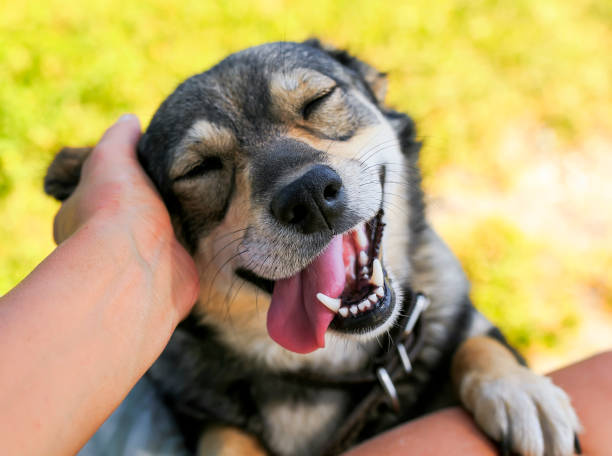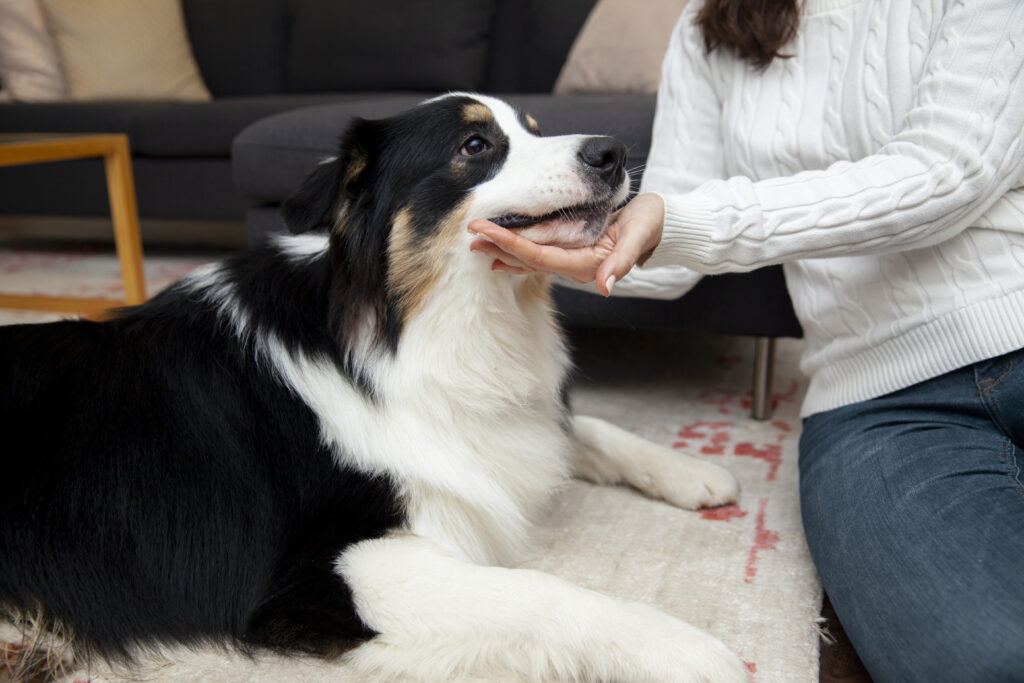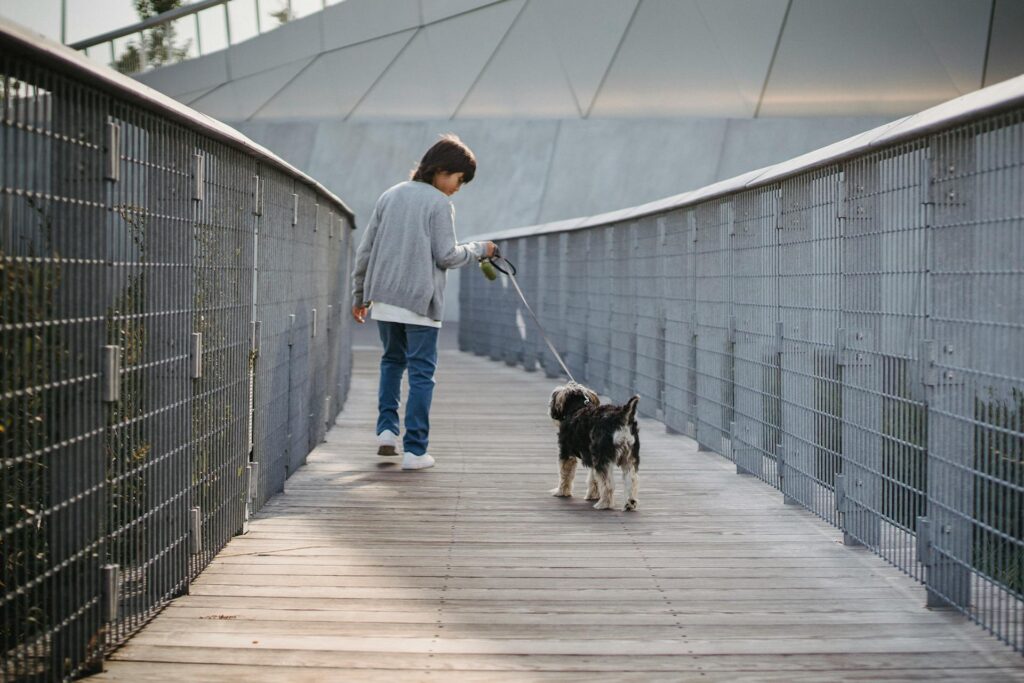
Have you ever noticed your furry friend trailing behind you on walks, sniffing every lamppost and fire hydrant while you march on ahead? You might wonder, “Why does my dog walk behind me instead of sticking close?”
There’s no single answer to this question. Dogs walk behind us for a bunch of different reasons, from wanting to explore the world to feeling a little insecure. In this guide we will delve into the many reasons why your dog might be lagging and what you can do about it, depending on your goals.
Understanding Dog Communication
Before we jump into specific reasons, let’s take a quick detour to understand how dogs communicate. Unlike humans who chat it up, dogs rely on body language to express themselves. Here are a few things to watch out for:
- Tail position: A high, wagging tail usually means your dog is happy and excited. A low or tucked tail shows fear or anxiety.
- Ear position: Perked-up ears show alertness and interest, while flattened ears indicate fear or submission.
- Body posture: A relaxed posture with a loose body suggests your dog is comfortable. A tense stance with stiff legs might mean they’re feeling unsure.
By observing these cues, you can get a better idea of your dog’s emotional state and what might be causing them to walk behind you.
Also Read: Post-Grooming Behavior: Why Does My Dog Keep Sitting After Grooming?
Reasons: Why Does My Dog Walk Behind Me?
There can be multiple reasons your dog walks behind you. Some of the most common reasons include:
Reason 1:The Call of the Sniff:
Dogs are born with super sniffers! Their noses are like high-powered information centers, constantly bombarded with fascinating smells. Every lamppost, fire hydrant, and blade of grass holds a story waiting to be sniffed out. When your dog walks behind you, they might be taking their sweet time deciphering these doggy messages, leaving you feeling like you’re dragging them along.
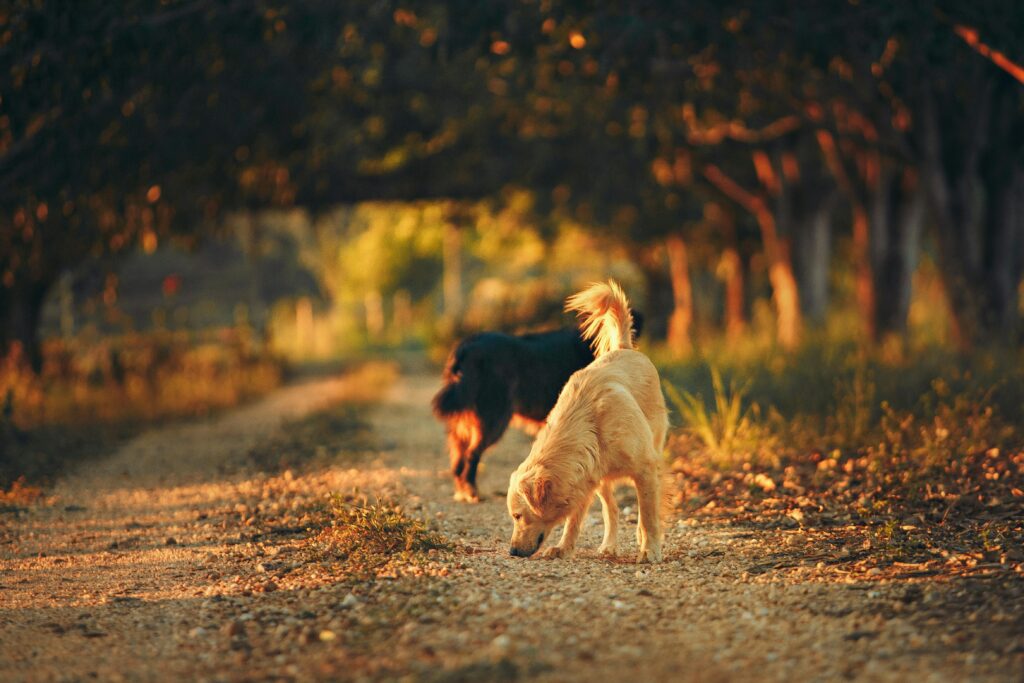
Reason 2:Leader of the Pack (or Not):
Dogs are descendants of wolves, social creatures with a pack hierarchy. Some dogs might see you as their fearless leader, happily following behind. Others, however, might be unsure of their place in the pack. This uncertainty can make them lag behind, feeling more comfortable in a follower position.
Reason 3:Fear of the Unknown:
Is your dog new to your home or neighborhood? Maybe they’re a little nervous about all the sights and sounds. In unfamiliar situations, some dogs find comfort in staying behind their human, feeling safer in a familiar space.
Reason 4:Leash Manners Still Under Construction:
Leash walking can be a challenge for both dogs and humans! If your dog pulls or lunges on walks, they might end up lagging behind simply because they’ve reached the end of the leash. This isn’t necessarily intentional, just a consequence of leash tension.
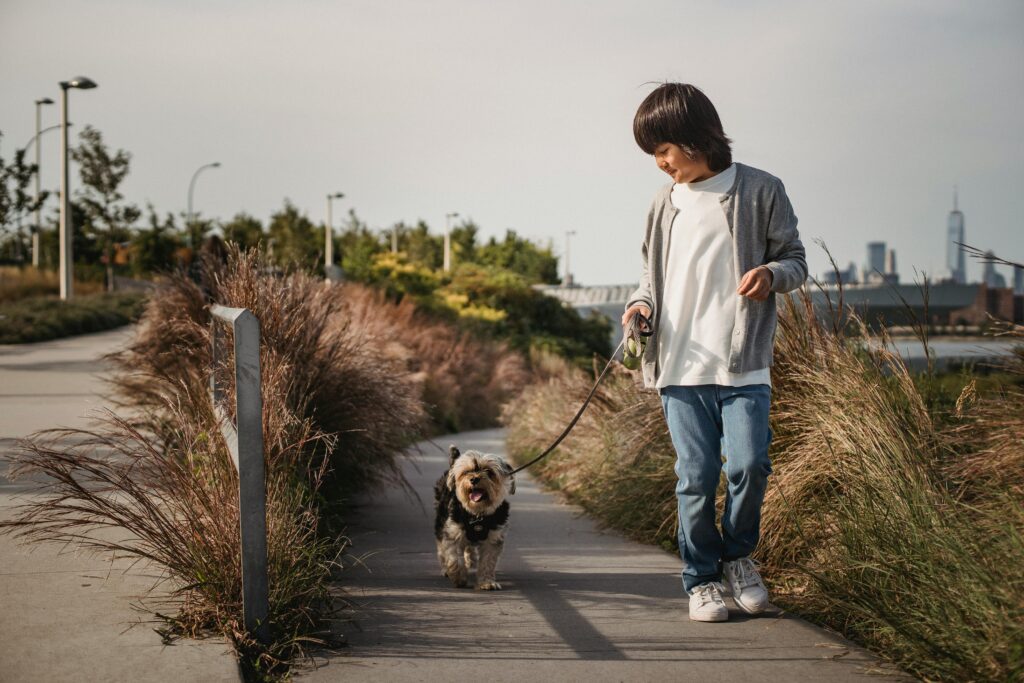
Reason 5:Medical Issues:
Sometimes, there might be a medical reason behind your dog’s lagging. If your dog is generally lethargic, seems in pain, or has any other concerning symptoms, it’s always best to consult your veterinarian to rule out any underlying health problems.
Should I Be Worried?
Not necessarily! Lagging behind doesn’t always mean a problem. If your dog seems happy and relaxed, sniffing away and occasionally glancing back at you, then there’s no need to worry. However, if they’re lagging because of fear, insecurity, or leash issues, then it might be time to address the root cause.
Helping Your Dog Walk Confidently by Your Side
- Embrace the Sniffing:
Remember, sniffing is a natural and enriching activity for dogs. Instead of pulling them along, try incorporating “sniff breaks” into your walks. Let them explore interesting smells in a safe, controlled way. You can use a longer leash or a training line to give them more freedom while maintaining control.
- Build Confidence and Leadership:
Help your dog feel secure in your pack by practicing basic obedience commands like “sit,” “stay,” and “come.” Reward good behavior with treats, praise, and affection.
- Desensitize and Counter Condition:
Is your dog scared of something specific on walks? Maybe it’s loud traffic or other dogs. You can use a technique called desensitization and counterconditioning to gradually expose them to their fears in a positive way. Start at a safe distance and reward calm behavior with treats. Gradually decrease the distance over time, creating a positive association with the scary object or situation. There are many resources online and professional trainers who can help you implement this technique effectively https://fearfreepets.com/prevention-and-management/.
- Leash Training for Smooth Walks:
Teaching your dog loose leash walking can significantly improve your walks. Positive reinforcement training methods are the most effective. Reward your dog for walking calmly by your side with different treats. Here’s a step-by-step approach to loose leash walking:
- Get the right equipment: A comfortable harness is a good alternative to a collar for leash training, as it distributes pressure more evenly. Choose a leash with a length that allows your dog some freedom to sniff but keeps them manageable.
- Start indoors: Begin in a quiet, familiar space with minimal distractions. Hold a high-value treat (like bits of cooked chicken) near your nose, then slowly walk forward. If your dog follows without pulling, reward them with the treat and praise. Repeat this process, gradually increasing the distance you walk.
- Practice outside: Once your dog has mastered loose leash walking indoors, take your training outside. Start in a low-distraction area and repeat the same process. Be patient and consistent – it might take some time for your dog to understand what you expect.
- Reward good behavior, ignore the rest: When your dog walks calmly by your side, shower them with praise and treats. If they pull, simply stop walking and wait for them to return to a loose leash. Don’t yank them back or get frustrated – positive reinforcement works best!
Additional Tips:
- Make walks fun! Vary your walking route, explore new places, and incorporate playtime into your walks. This will keep your dog engaged and motivated.
- Consider consulting a professional trainer: If you’re struggling to train your dog yourself, a certified professional dog trainer can provide valuable guidance and personalized training techniques.
When Lagging Becomes a Habitual Problem:
If your dog constantly lags behind despite your efforts, it might be a sign of deeper anxiety or fear. Don’t get discouraged! Remember, patience and positive reinforcement are key. Here are some additional resources that might be helpful:
- The American Society for the Prevention of Cruelty to Animals (ASPCA) has a wealth of information on dog behavior and training: https://www.aspca.org/
- The Association of Professional Dog Trainers (APDT) can help you find a qualified trainer in your area: https://apdt.com/
Final Thoughts
Understanding why your dog walks behind you is the first step towards creating a more enjoyable walking experience for both of you. By addressing the underlying cause and implementing some simple training techniques, you can help your furry friend walk confidently by your side, ready to explore the world together! Every dog is an individual, and what works for one might not work for another. Be patient, consistent, and positive, and you’ll eventually have a happy, well-behaved walking companion.
Happy trails!
FAQs: Why Does My Dog Walk Behind Me?
Q.1. My dog walks behind me but pulls when they get to exciting smells. How can I address this?
This sniffing behavior is natural for dogs, but pulling can be frustrating. Try incorporating “sniff breaks” into your walks. Choose designated areas where your dog can freely sniff and explore, rewarding them for calm behavior. During regular walking, practice the “leave it” command when encountering exciting smells. Reward them for focusing on you and continuing the walk.
Q.2. Is it okay to let my dog walk ahead of me sometimes?
Absolutely! While walking behind you can show respect, allowing your dog to explore in front occasionally can boost their confidence and provide mental stimulation. However, maintain control by having them check in with you periodically through commands or treats.
Q.3. How can I tell if my dog is walking behind me out of fear?
Look for additional signs of anxiety besides just walking position. These might include flattened ears, tucked tail, excessive panting, or whale eye (showing the whites of their eyes). If you suspect fear, avoid forcing them to walk in front and gradually introduce them to new environments with positive reinforcement.
Q.4. What kind of harness is best to prevent leash pressure discomfort?
A well-fitting front-clip harness can be a good option. These distribute leash pressure more evenly across the dog’s chest and shoulders, reducing discomfort around the neck. Always ensure proper fit to avoid rubbing or chafing.
Q.5. Should I use a longer leash if my dog prefers to walk behind me?
A longer leash can give your dog more freedom to sniff and explore while still maintaining control. However, be mindful of your surroundings and potential hazards like traffic or other dogs. Retractable leashes might not be ideal as they can be difficult to control in unexpected situations.
Q.6. What are some good treats to use for training my dog to walk beside me?
Use high-value treats that your dog finds particularly motivating. Small, soft treats like chopped-up pieces of meat or cheese are good options. Remember to adjust treat size based on your dog’s breed and avoid overfeeding.
Q.7. How long will it take to train my dog to walk beside me?
The training time depends on your dog’s individual personality and learning style. Be patient and consistent with your training sessions, using positive reinforcement and praise. Short, frequent training sessions are more effective than long, infrequent ones.
Q.8. Is it a bad idea to carry my small dog if they get tired and walk behind me?
While it might seem like a good idea to help your small dog, carrying them can teach them that walking is tiring and discourage them from putting in the effort. If your dog gets tired, encourage them to rest in a shaded area for a short while before continuing the walk.
Q.9. What if my dog lunges or barks at other dogs when they walk in front?
If your dog exhibits leash reactivity, consult a professional trainer. They can help you develop strategies to manage leash pulling and reactivity towards other dogs. In the meantime, avoid situations that trigger these behaviors and maintain a safe distance from other dogs during walks.
Q.10. I’ve tried training, but my dog still insists on walking behind me. Should I give up?
Not at all! Some dogs are simply more comfortable walking behind you. As long as they are healthy and not displaying signs of fear or anxiety, there’s no need to force a different walking position. Focus on building a strong bond through positive reinforcement training and enjoyable walks, and the walking position might become less important over time.
